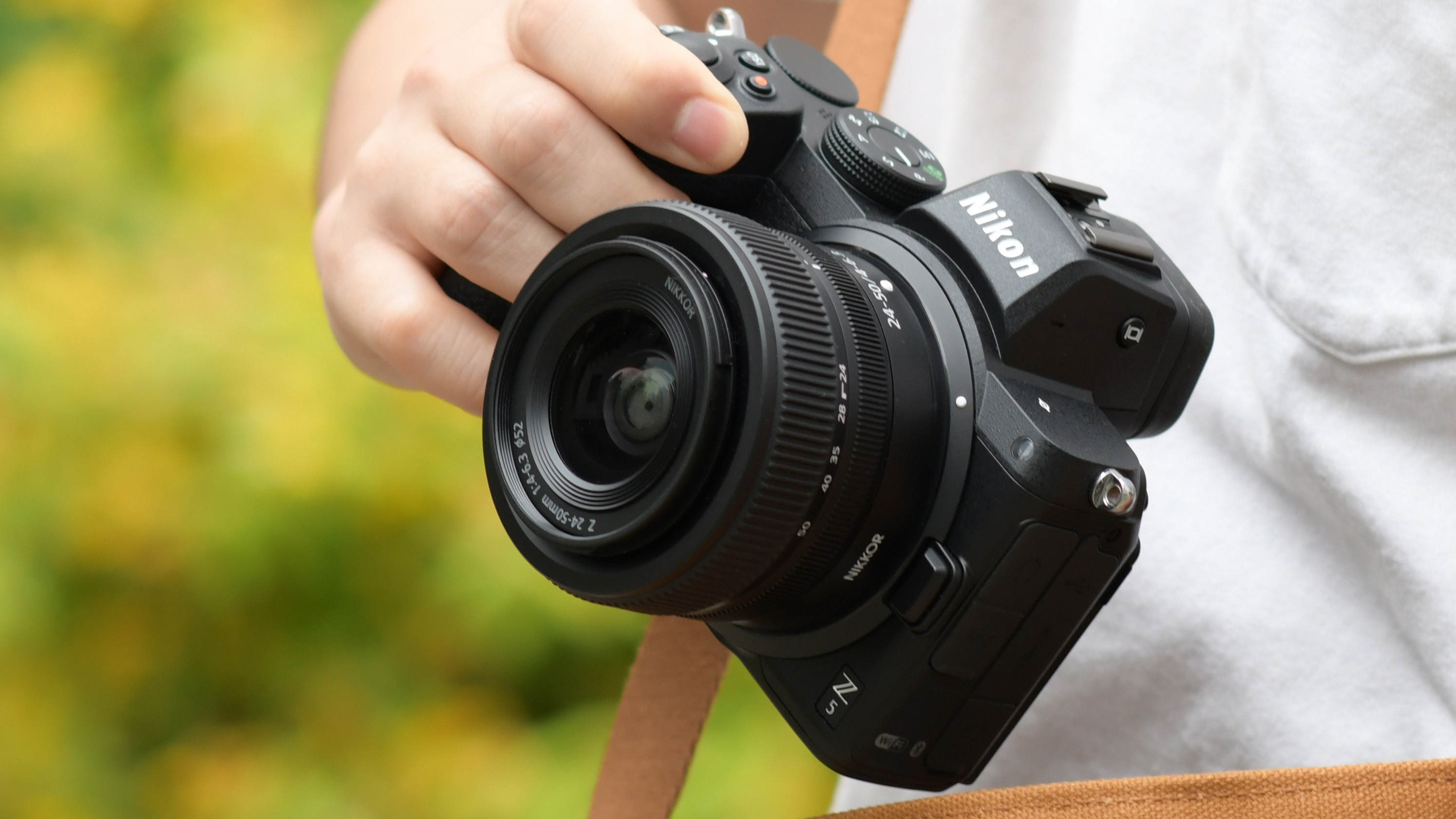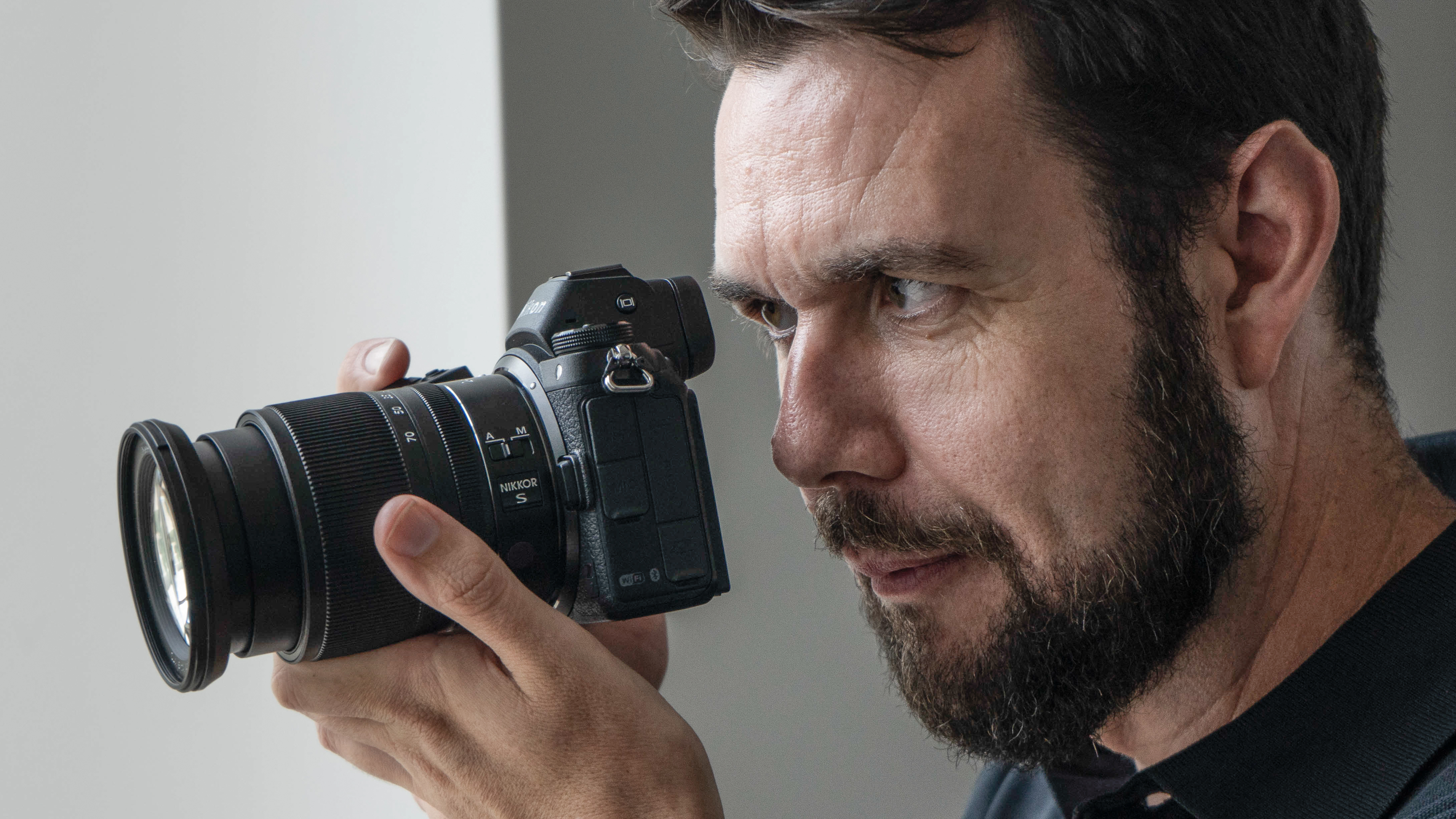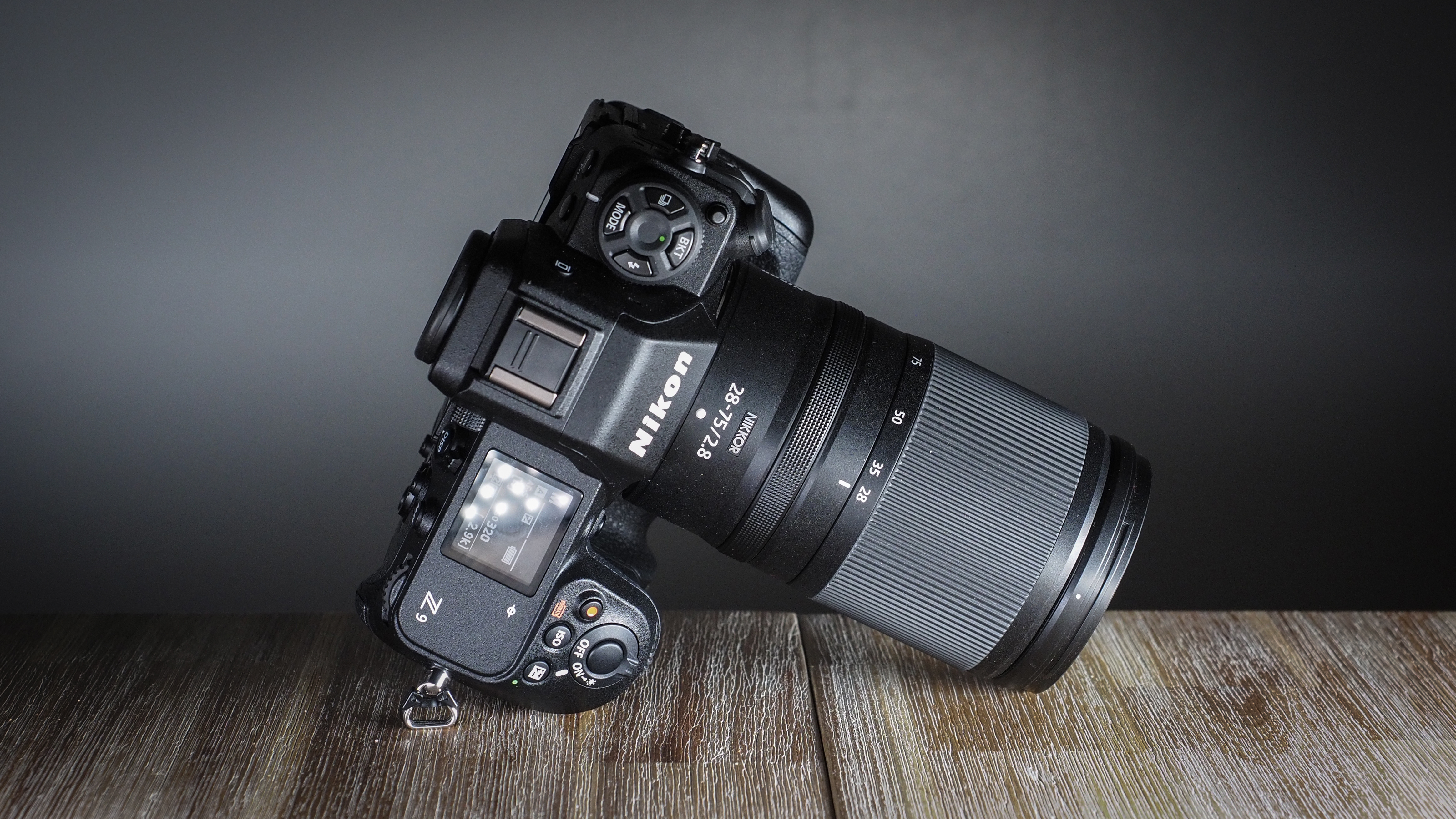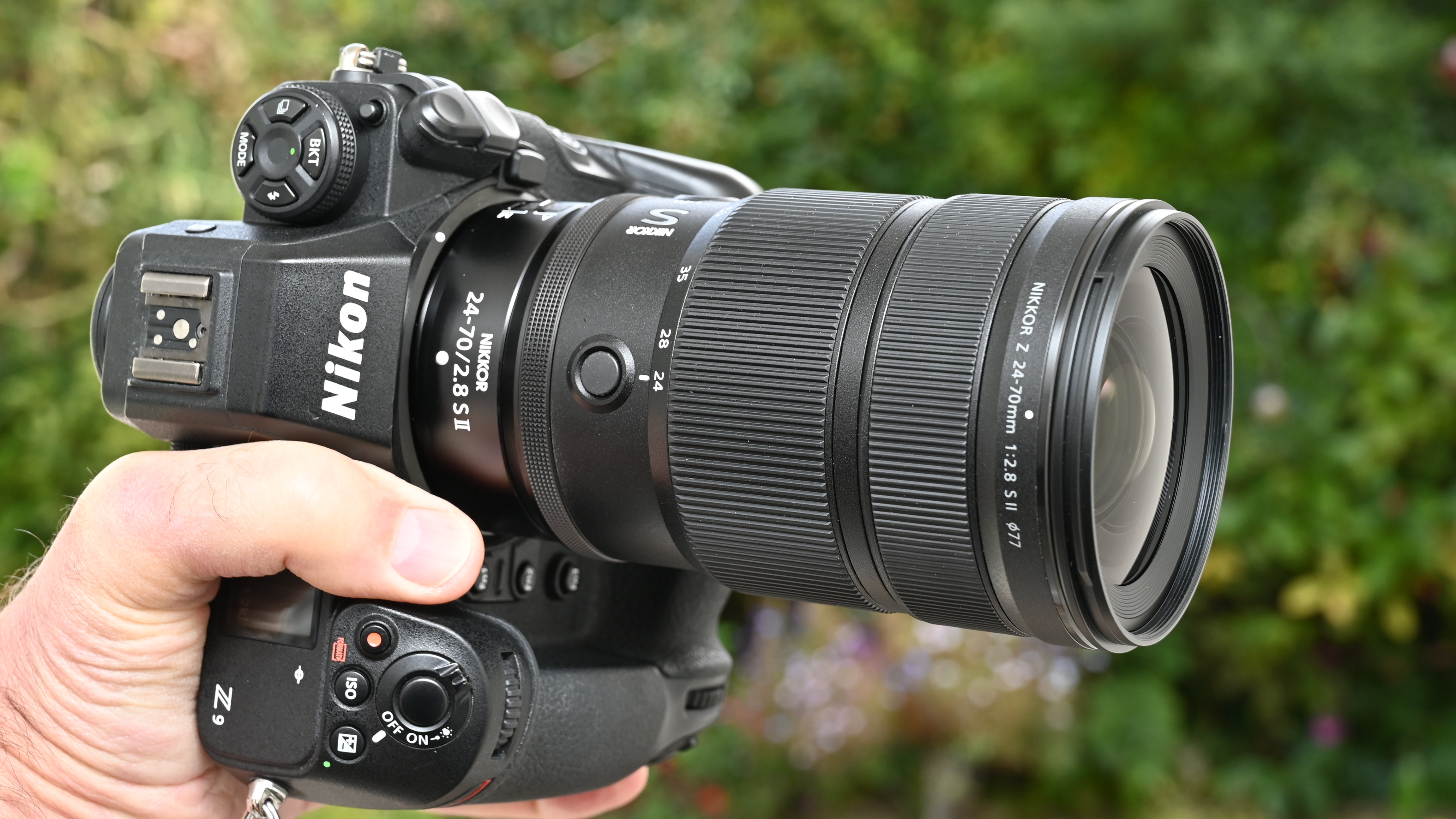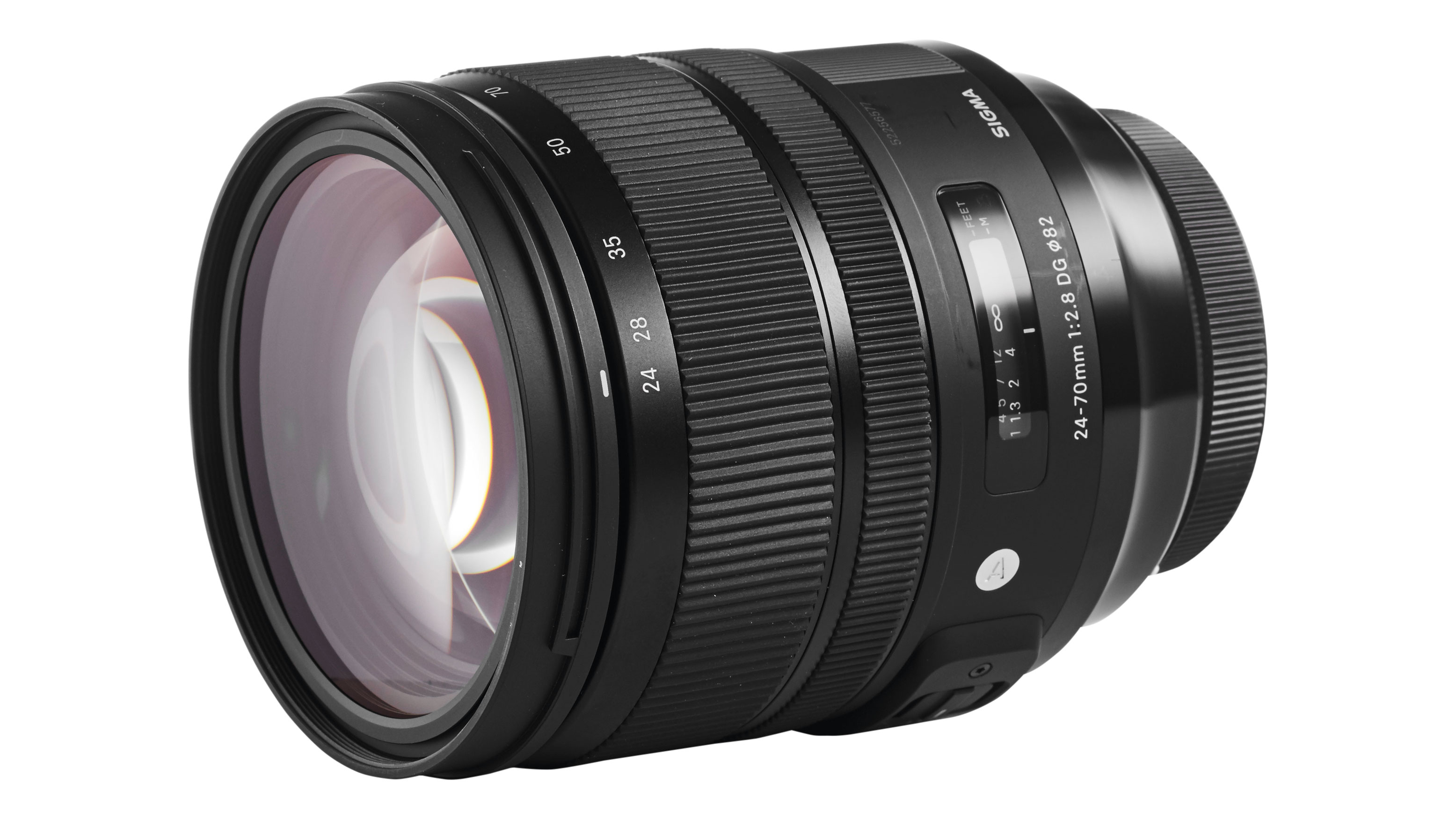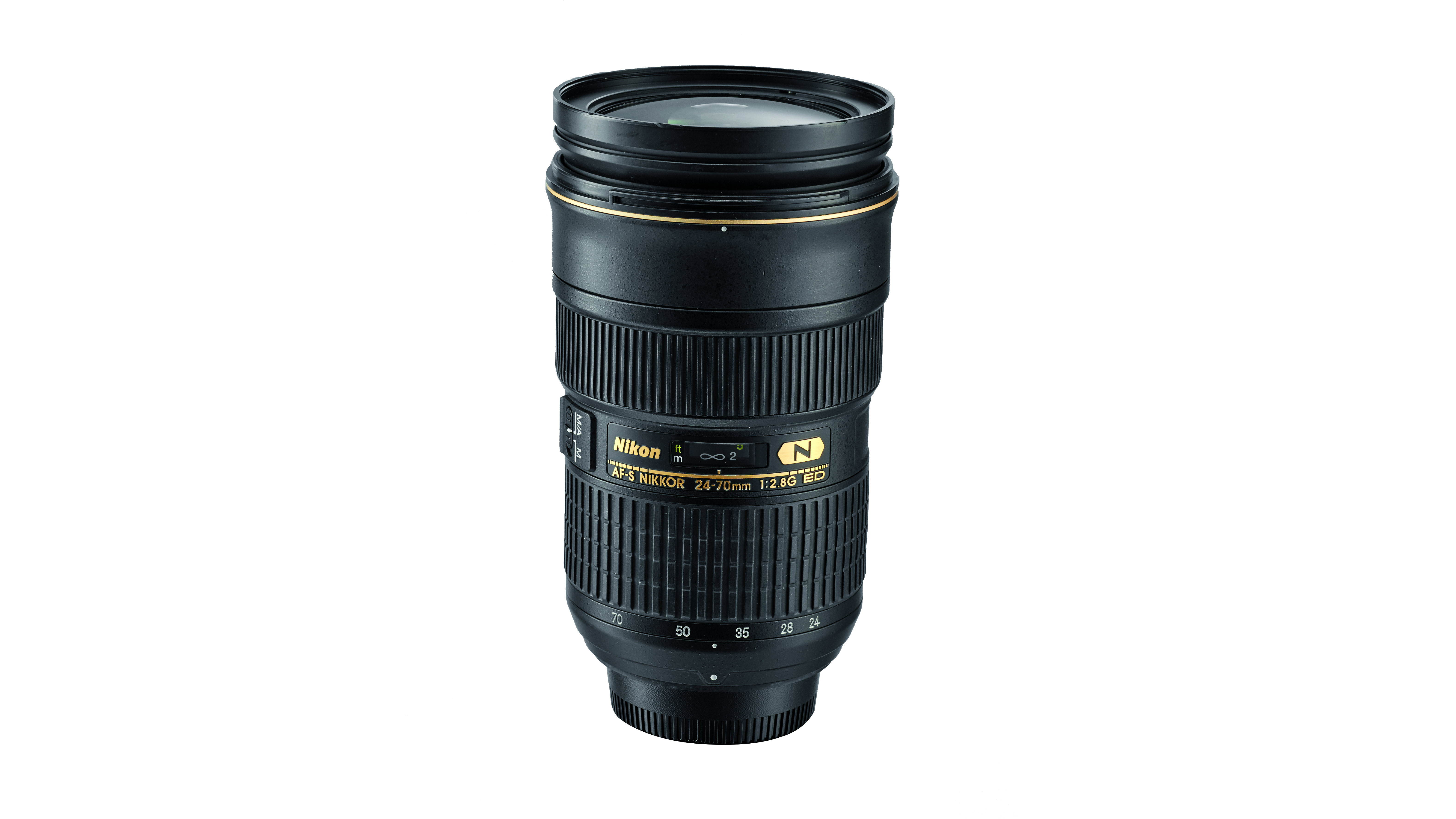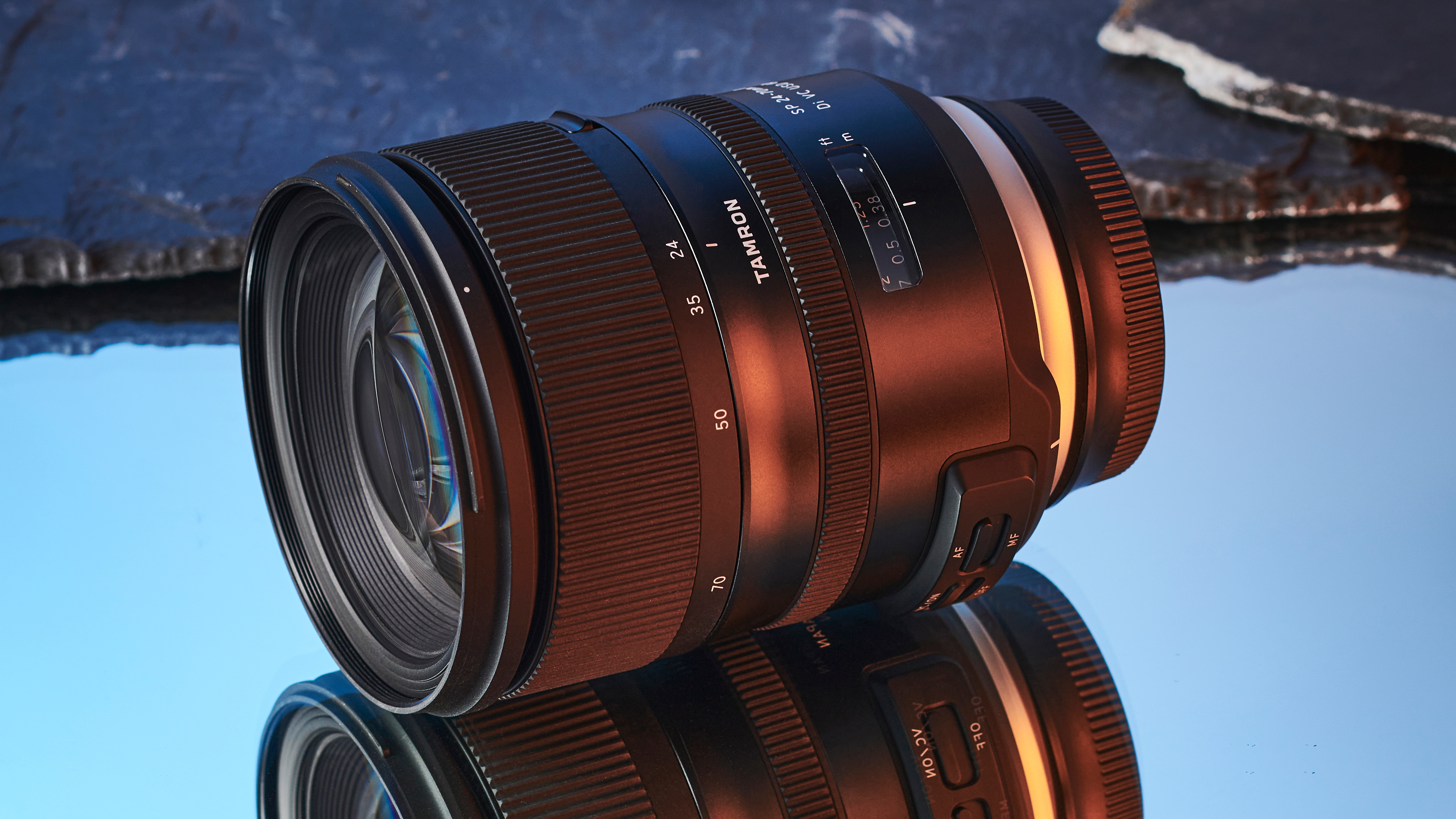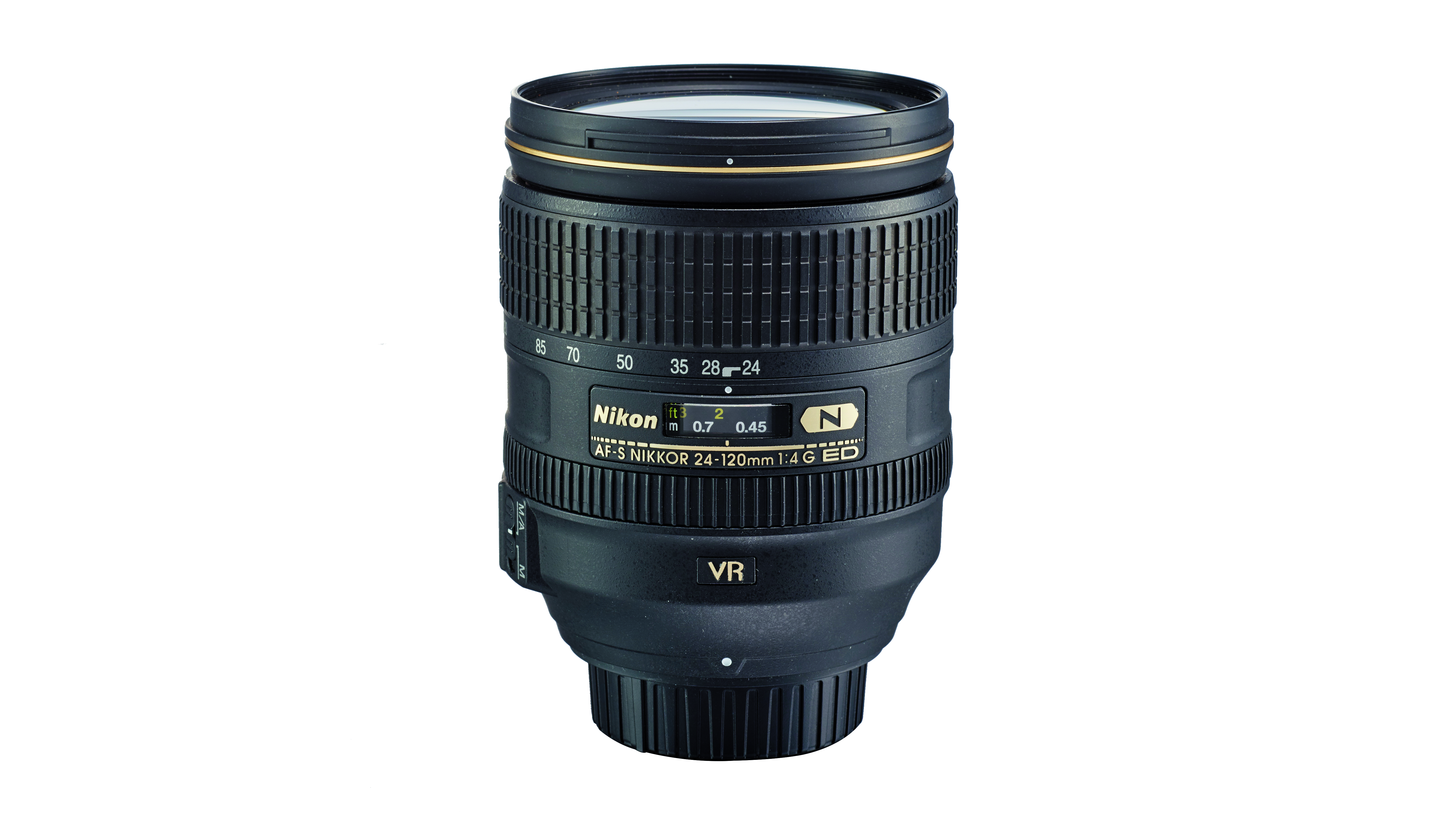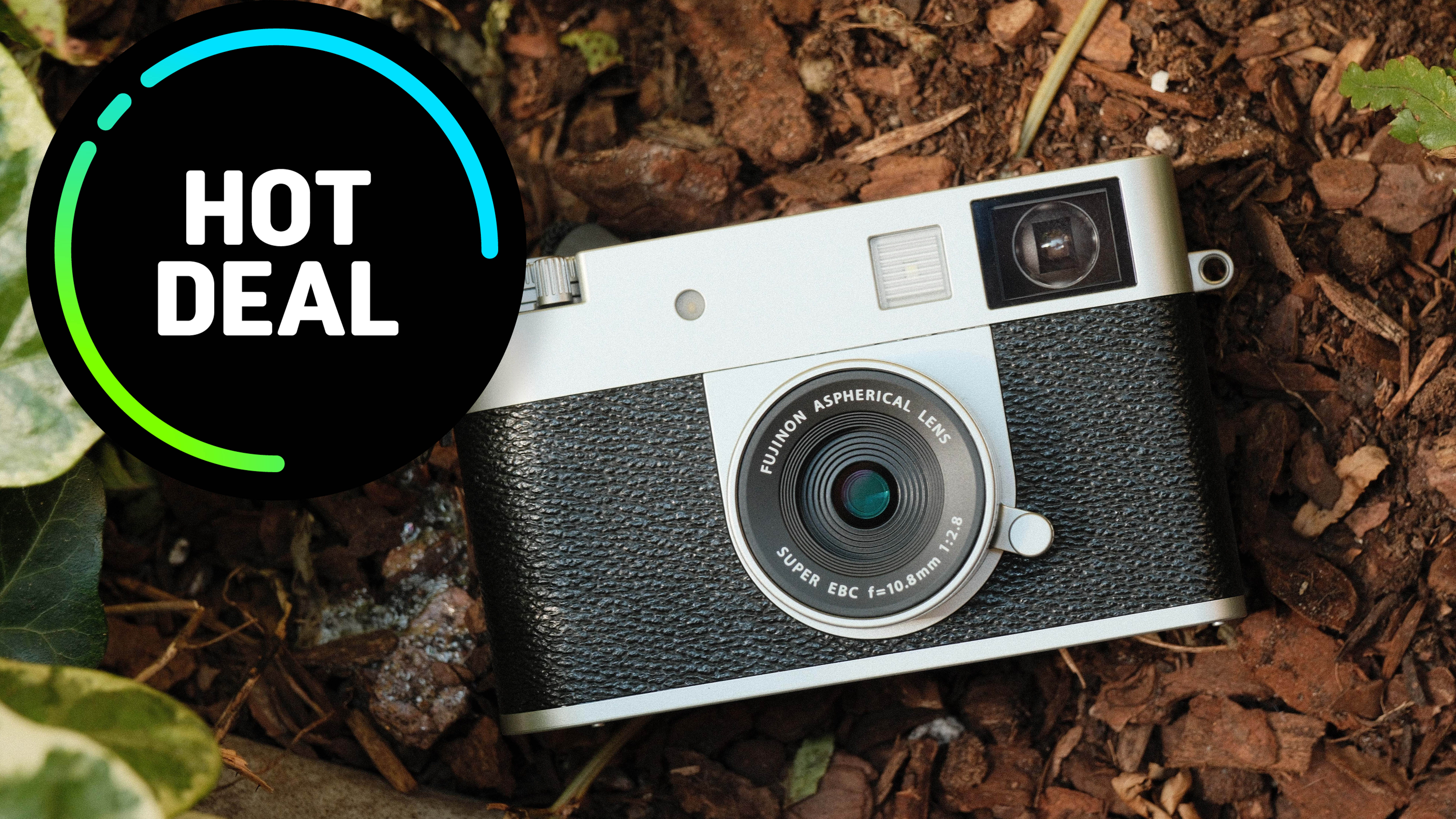The best Nikon standard zooms: the top zoom lenses you'll use every day
The best standard zooms have a wide-to-telephoto range for day-to-day shooting, and these are the best buys for Nikon Z-mount mirrorless or F-mount DSLRs

If you've bought a Nikon interchangeable lens camera – whether it's an F-mount DSLR or a Z-mount mirrorless – you may well have already picked up a kit lens that covers the standard zoom range. But could you be using something better?
The kit lenses you get with a new camera tend to be light and compact and deliver decent image quality, covering all your basic needs when you start taking photos. However, you may soon find yourself brushing up against a narrow maximum aperture, or wishing you had extra features like weatherproofing or optical image stabilization. And that's when it's time to start shopping around.
Many of the better lenses covering a similar zoom range will have features like a constant maximum aperture, expanding your options in low light and enabling you to create a shallower depth of field in an image. The ability to create images with a blurred background and sharp foreground is critical in genres like portraiture and is much more difficult with a limited kit lens.
All this does, of course, come at a cost – and not just a financial one. Lenses with wider apertures will be bulkier and heavier than kit lenses, which can be an issue if you're a travel photographer. I've picked standard zoom lenses from across Nikon's entire stable, for Nikon Z-series mirrorless cameras and DSLRs. Note that you can use full-frame standard zooms on a DX body, but the effective focal length becomes 1.5x longer. So, let's get to the lenses!
Best Nikon standard zoom lenses
Why you can trust Digital Camera World
Nikon Z standard zooms
The best Nikon standard zoom lenses for Nikon Z mount mirrorless cameras, such as the Nikon Z50 II, Z6 III and Z8.
Specifications
Reasons to buy
Reasons to avoid
To an extent, making a good lens is all about trade-offs. Making a full-frame lens that's as amazingly light and compact as the Nikon Z 24-50mm f/4-6.3 is bound to incur some drawbacks in other areas, namely in zoom range and maximum aperture. So, while it makes for an amazingly light travel lens, its 2x zoom range is more constricted than others on this list, and the maximum aperture of f/4-6.3 reduces your options in low light.
It's an optically solid lens, available at a good price, though whether you need what it's selling is really up to you. If you can see a use for a lens with these vital statistics, then the Nikkor Z 24-50mm f/4-6.3 will not let you down. However, many photographers may find themselves chafing against its limitations.
Read our full Nikon Z 24-50mm f/4-6.3 review
Specifications
Reasons to buy
Reasons to avoid
Developed specifically for DX-sensor APS-C format Z-series mirrorless cameras, this lens is suitably compact and lightweight, weighing in at just 135g. It has a retractable design, enabling it to shrink down to just 32mm in length for stowage, so it’s eminently travel-friendly. One of the weight-saving measures is that the lens has a plastic rather than metal mounting plate, and there are no weather-seals, but build quality feels pretty solid overall.
Given that the aperture rating narrows to a ‘slow’ f/6.3 at the long end of the zoom range, and that all Nikon DX Z-series cameras to date have no in-body stabilization, the 4.5-stop optical VR is a very welcome inclusion. This little lens punches above its weight for image quality, with impressive sharpness throughout the entire zoom range, even when shooting wide-open.
Read our full Nikon Z DX 16-50mm f/3.5-6.3 VR review
Specifications
Reasons to buy
Reasons to avoid
Tying in perfectly with the slim, lightweight design ethos of Z6 III and Z7 II cameras, this standard zoom tips the scales at 500g and is nice and small for stowing away, thanks to its retractable design. It certainly doesn’t come up short in terms of image quality, with fabulous sharpness across the entire image frame, throughout the whole zoom range.
Naturally, the widest aperture of f/4 doesn’t deliver such a tight depth of field as from the more up-market Z 24-70mm f/2.8 lens, but defocused areas in scenes look pleasantly soft. Indeed, you can focus right down to 0.3m, enabling a 0.3x magnification factor and plenty of background blur. Onboard controls are fairly rudimentary but you can alter the action of the manual focus ring for other functions, like stepless aperture control during movie capture.
Read our full Nikon Z 24-70mm f/4 S review
Specifications
Reasons to buy
Reasons to avoid
The Nikon Z 28-75mm f/2.8 is an absolutely stunning lens, incorporating a fast f/2.8 aperture into a much lighter and more compact package than the much pricier Nikon Z 24-70mm f/2.8 S II. True, you're getting a slightly oddball focal length range, starting at 28mm rather than the 24mm typical of standard zooms, thus losing out slightly at the wide-angle end. However, it stretches to 75mm rather than the more common 70mm, so you gain at the telephoto end.
The result is a small, lightweight, super sharp (centrally, at least) optic that gives you a precious bit of extra reach at the expense of less width. Certainly, the Trinity S lens boasts slightly better corner sharpness, but otherwise, I'd put the two on a par optically. So if the quirky focal length works for you, I would recommend the 28-75mm f/2.8 without hesitation – especially at virtually half the price!
Read our full Nikon Z 28-75mm f/2.8 S full review
Specifications
Reasons to buy
Reasons to avoid
A constant-aperture 24-70mm f/2.8 standard zoom has become a standard fixture in any premium camera manufacturer's lens range. The Nikon Z 24-70mm f/2.8 S II lens is a spectacular upgrade over the original Nikon Z 24-70mm f/2.8 S, boasting reduced weight, a fully internal zoom mechanism, a new 'Silky Swift Voice Coil Motor' for incredibly fast and quiet autofocus, and an aperture ring with a 'Click on/off' switch to allow for tactile feedback when shooting stills and smooth transitions in video. While it lacks the OLED display of the first-gen lens, it compensates with two customizable function buttons.
But this lens and its predecessor are not the only options. Nikon's Z-mount cameras first arrived with the Nikon Z 24-70mm f/4 S, which is a lot smaller, around half the price, and a lens I still rate very highly. And if you don't need such a wide angle of view, the Nikon Z 28-75mm f/2.8 offers the same constant maximum aperture but in a lighter, cheaper package and the very similar Tamron Z 28-75mm f/2.8 Di III RXD GII if you're happy to buy a non-Nikon-branded lens. For outright optical performance, however, the Nikon Z 24-70mm f/2.8 S II reigns supreme.
Read more: Nikon Z 24-70mm f/2.8 S II review
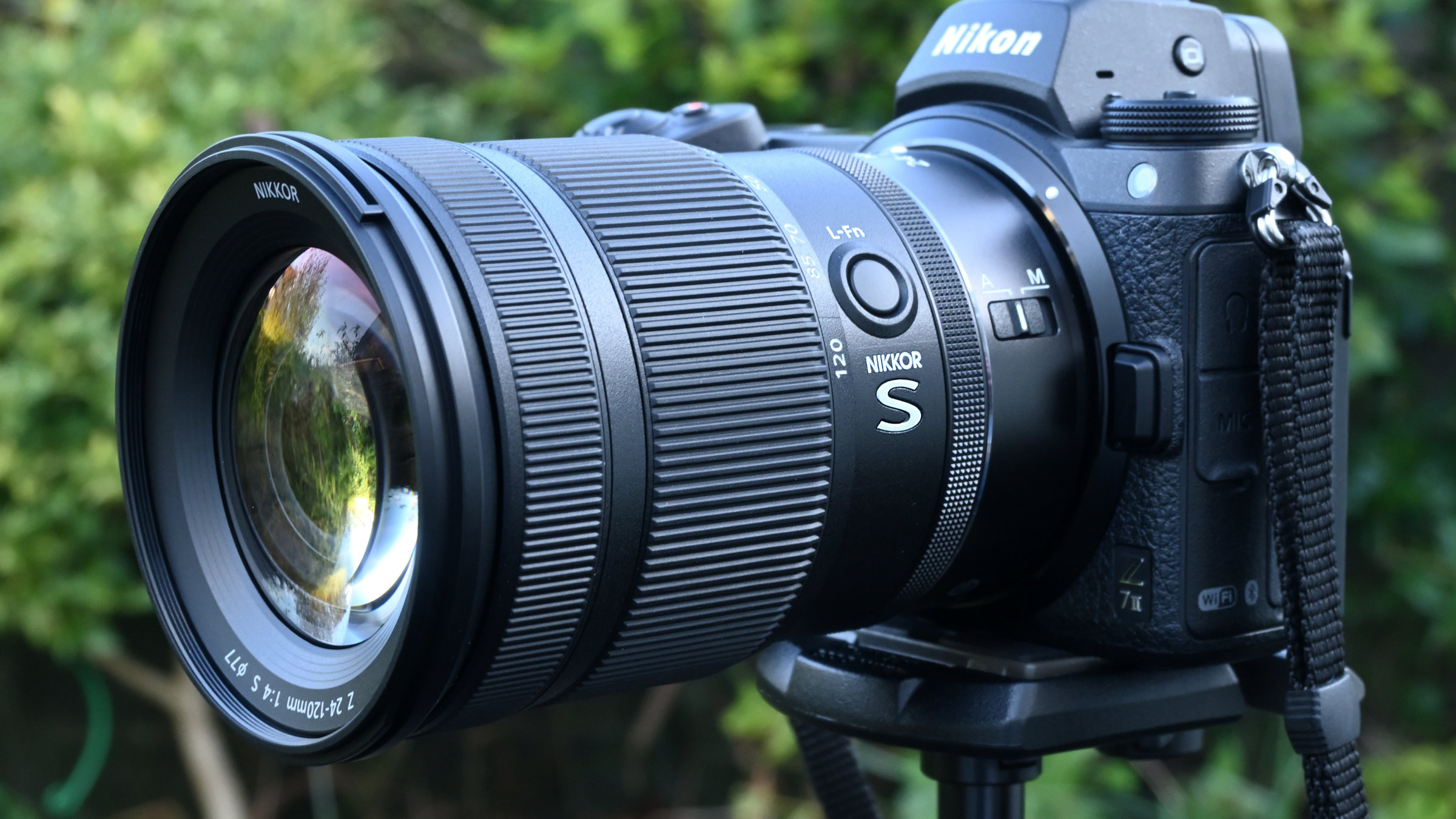
Specifications
Reasons to buy
Reasons to avoid
Building on bygone popularity, the Nikon Z 24-120mm f/4 S is a mirrorless version of a somewhat classic 5x standard zoom for F-mount DSLRs. It makes the most of optical enhancements afforded by the Z system’s larger mount circumference and closer proximity to the image sensor. The net result is enhanced sharpness and all-round image quality, across the whole frame and throughout the entire zoom range, along with a reasonably compact and lightweight build.
It's the best of the bunch if you prioritize a big zoom range coupled with a fairly fast constant aperture. If not, you’re better off with the retractable, compact and lightweight 24-70mm f/4 S, which is less expensive to buy.
Read our full Nikon Z 24-120mm f/4 review
Nikon DSLR standard zooms
The best Nikon standard zoom lenses for Nikon full-frame FX DSLRs, such as the Nikon D850 or Nikon D780.
Specifications
Reasons to buy
Reasons to avoid
Sigma’s 24-70mm Art lens goes head to head with Nikon’s top-flight standard zoom for full-frame DSLRs. The headline specifications in terms of zoom range, aperture rating and optical stabilization are the same for both lenses, and they both deliver excellent image quality. They also both feature electromagnetically controlled diaphragms for aperture control.
An additional bonus for the Sigma is that it’s compatible with an optional USB Dock for fine-tuning and customization, as well as for applying firmware updates. It’s also significantly shorter than the Nikon in physical length, although both lenses are similarly weighty at just over a kilogram. The Nikon lens is very marginally sharper but the Sigma produces less color fringing and distortion at short focal lengths, and less vignetting at wide apertures. All in all, the Sigma is the better buy.
Read our full Sigma 24-70mm f/2.8 DG OS HSM | A review
Specifications
Reasons to buy
Reasons to avoid
This ‘f/2.8E’ edition of Nikon's original 24-70mm f/2.8G lens is a major revamp. It has an all-new optical layout, even tougher build, and the added attraction of VR, rated at four stops. There are four ED elements in total, plus an HRI (High Refractive Index) element, Nano Crystal Coatings, fluorine coatings on the front and rear elements, and best of all, an electromagnetically controlled diaphragm. As such, the lens features a host of Nikon’s latest technical innovations, along with quick and whisper-quiet ring-type ultrasonic autofocus.
The electromagnetically controlled diaphragm enables very consistent exposures in rapid-fire continuous shooting. Sharpness and contrast are both excellent, and there’s particularly good resistance to ghosting and flare. However, vignetting is pronounced at wide apertures, and color fringing and distortion can be noticeable.
Read our full Nikon AF-S 24-70mm f/2.8E ED VR review
Specifications
Reasons to buy
Reasons to avoid
The combination of a 24-70mm zoom range with a fast f/2.8 constant aperture is a favorite of many creative photographers. This Tamron lens stole a lead on its competitors by adding optical stabilization into the mix. The Tamron looks and feels like a truly professional-grade lens. It’s not only robust, but it was Tamron’s first lens to boast weather seals.
Posh glass includes three LD (Low Dispersion) and two XR (Extra Refractive index) elements. The Tamron comes pretty close to the much more expensive Nikon 24-70mm f/2.8 lens for center-sharpness throughout most of the zoom range. However, it drops off a little more at the long end, and is somewhat softer towards the corners of the frame at all zoom settings. Autofocus is rapid and whisper-quiet.
Read our full Tamron SP 24-70mm f/2.8 Di VC USD G2 review
Specifications
Reasons to buy
Reasons to avoid
An upgrade of Nikon’s original 24-120mm VR lens, this has a more effective, new-generation optical stabilizer (rated at up to four stops), and a constant f/4 aperture, instead of it shrinking from f/3.5 to f/5.6 through the zoom range. Like the other Nikon F-mount lenses on test, it feels reassuringly well-built and features a rubber weather-seal ring on the mounting plate. Handling is excellent, with smooth operation of the zoom and focus rings.
Optical highlights include two ED elements and Nano Crystal Coating. The autofocus and Mk II VR systems work well, but the Nikon loses out to the competing Sigma 24-105mm for center-sharpness, especially in the longer half of the zoom range. The flip side is that the drop-off in corner sharpness is less noticeable. Overall image quality is very satisfying.
Read our full Nikon AF-S 24-120mm f/4G ED VR review
How we test lenses
We test lenses using both real world sample images and lab tests. Our lab tests are carried out scientifically in controlled conditions using the Imatest testing suite, which consists of custom charts and analysis software that measures resolution in line widths/picture height, a measurement widely used in lens and camera testing. We find the combination of lab and real-word testing works best, as each reveals different qualities and characteristics.
The best camera deals, reviews, product advice, and unmissable photography news, direct to your inbox!
Matthew Richards is a photographer and journalist who has spent years using and reviewing all manner of photo gear. He is Digital Camera World's principal lens reviewer – and has tested more primes and zooms than most people have had hot dinners!
His expertise with equipment doesn’t end there, though. He is also an encyclopedia when it comes to all manner of cameras, camera holsters and bags, flashguns, tripods and heads, printers, papers and inks, and just about anything imaging-related.
In an earlier life he was a broadcast engineer at the BBC, as well as a former editor of PC Guide.
- Adam WaringGuides Editor
